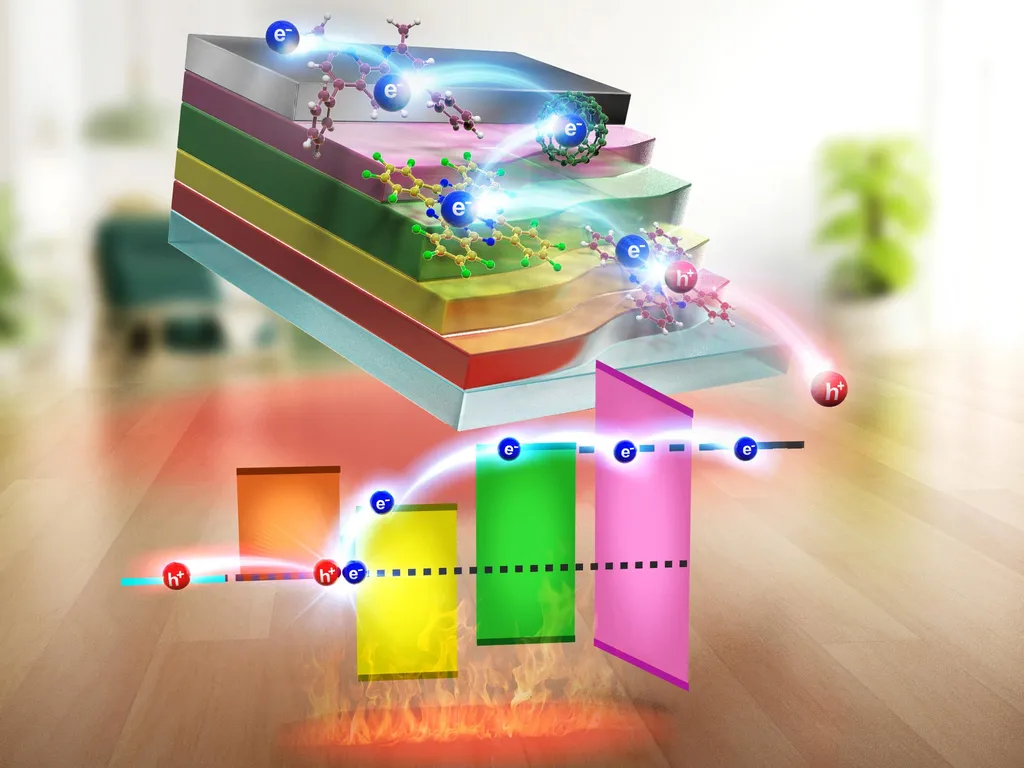In the bustling world of materials science, a groundbreaking study has emerged from the labs of Univ. Grenoble Alpes, shedding new light on a material that could revolutionize the energy sector. Polyvinylidene fluoride-trifluoroethylene, or P(VDF‐TrFE) for short, has long been celebrated for its exceptional electromechanical properties, making it a prime candidate for non-volatile memories, energy-harvesting systems, and advanced sensors. However, its complex structure has left scientists scratching their heads, until now.
Dr. Christine Revenant, a leading researcher at the Univ. Grenoble Alpes CEA, IRIG‐MEM, has been delving into the mysteries of P(VDF‐TrFE). Her latest findings, published in the journal Macromolecular Materials and Engineering, which translates to Macromolecular Engineering Materials, offer a fresh perspective on how this material behaves under an electric field, a process known as poling. “The structural evolution of P(VDF‐TrFE) during poling is quite dramatic,” Revenant explains. “We’ve observed the emergence of an ordered amorphous phase between crystalline nanodomains, which significantly impacts the material’s properties.”
So, what does this mean for the energy sector? Well, P(VDF‐TrFE) is a type of ferroelectric polymer, which means it can generate an electric charge in response to mechanical stress. This makes it an excellent candidate for energy-harvesting systems, where mechanical energy can be converted into electrical energy. The discovery of this ordered amorphous phase could lead to more efficient energy-harvesting devices, as well as improved sensors and actuators.
But the implications don’t stop at energy harvesting. The insights gained from this study could also pave the way for new ferroelectric organic materials. These materials could be used to create flexible, biocompatible sensors and energy applications, opening up a world of possibilities in fields like healthcare and wearable technology.
The study also offers a deeper understanding of the piezoelectric effects in P(VDF‐TrFE). Piezoelectricity is the ability of certain materials to generate an electric charge in response to applied mechanical stress. The longitudinal and transverse piezoelectric effects in P(VDF‐TrFE) can now be better explained by its complex structure, which consists of elongated grains with lamellae separated by isotropic amorphous regions.
Revenant’s work is a testament to the power of high-resolution X-ray diffraction techniques. By using operando X-ray diffraction, she and her team were able to observe the structural changes in P(VDF‐TrFE) in real-time, providing unprecedented insights into its behavior.
As we look to the future, it’s clear that materials like P(VDF‐TrFE) will play a crucial role in shaping the energy landscape. With continued research and development, we could see a world where mechanical energy is efficiently harvested and converted into electrical energy, powering our devices and homes in a sustainable and eco-friendly way. The work of Dr. Christine Revenant and her team is a significant step in that direction, offering a glimpse into the exciting possibilities that lie ahead.

